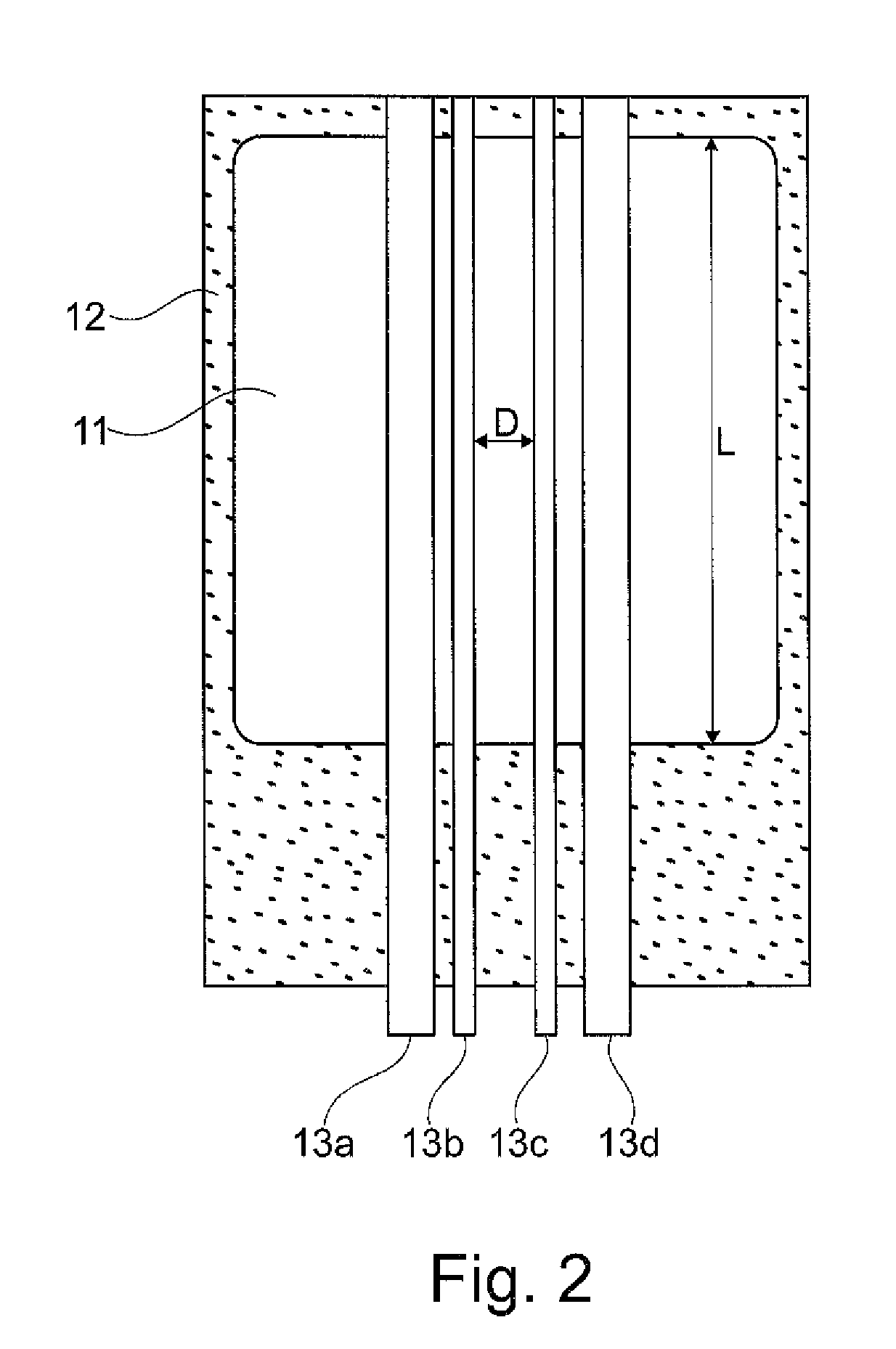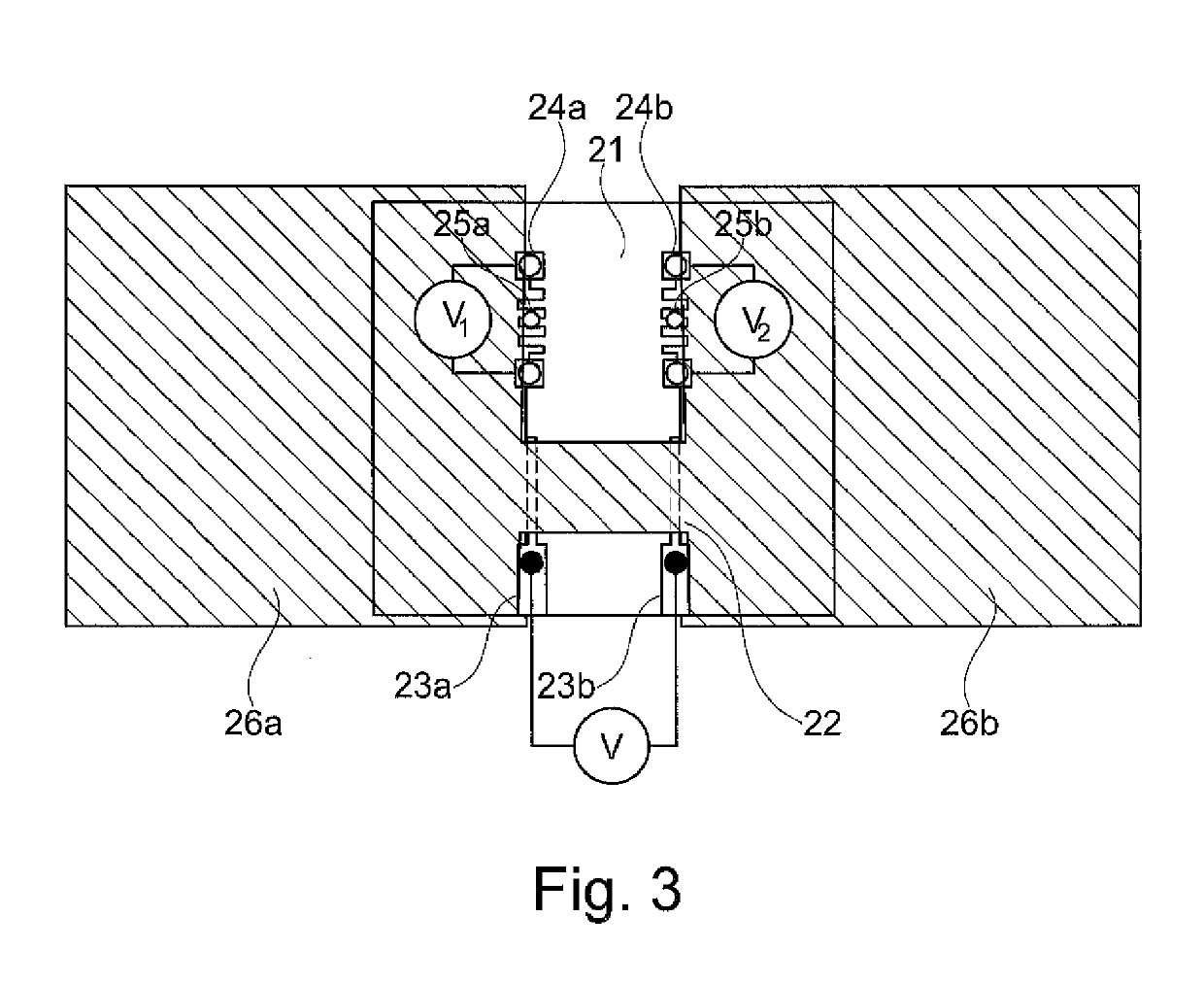Method of manufacturing thermoelectric module using ink formulations
a thermoelectric module and ink formulation technology, applied in the direction of sustainable manufacturing/processing, non-metal conductor manufacturing, final product manufacturing, etc., can solve the problems of poor drying properties of solvents which may otherwise represent suitable candidates for printing ink compositions, difficult solvent selection of doped conductive polymers, and high toxicities, etc., to achieve excellent electrical conductivity and improve performan
- Summary
- Abstract
- Description
- Claims
- Application Information
AI Technical Summary
Benefits of technology
Problems solved by technology
Method used
Image
Examples
example 1
[0068]A dispersion has been prepared by separately dissolving PQT12 in 1,2,4-trimethylbenzene (TMB; δD=18.0; δP=1.0; δH=1.0) as the first solvent at a concentration of 1.29% w / v, and the dopant F4TCNQ in acetonitrile (δP=18.0) as the second solvent at a concentration of 0.33% w / v. The dissolution of PQT12 has been accelerated by heating to 80° C. The solutions were then combined with mixing and subjected to sonication at 37 kHz for 1 hour, resulting in a stable dispersion having a polymer:dopant ratio of 9:1 by weight and TMB:acetonitrile ratio of 7:3 by volume, the dispersion comprising doped polymer particles suspended within the solvent blend and having a solids content of 1%.
[0069]Thereafter, devices having a configuration in accordance with FIG. 2 have been manufactured. For this purpose, substrates have been prepared by evaporating or sputtering onto glass a layer of chrome / gold or AgBiGe, respectively. These were patterned by photolithography to form 4 point probe electrode c...
example 2
[0075]In a further example, a dispersion has been prepared in accordance with Example 1, with the exception that anisole (δD=17.8; δP=4.1; δH=6.7) has been used as the first solvent for PQT12 and acetone (δP=10.4) as the second solvent for F4TCNQ. The conductivity a of the conductive film measured in a device prepared in analogy to Example 1 was determined to be 0.1 S / cm.
[0076]Accordingly, it has been shown that the formulation according to the present invention has sufficient stability for solution deposition methods and enables manufacture of conductive layers having both excellent conductivity and thermopower.
[0077]Once given the above disclosure, many other features, modifications, and improvements will become apparent to the skilled artisan.
[0078]In some examples, the first solvent may take the form of a blend of electron-rich organic compounds, each comprising one or more electron-donating groups. In other words, the first solvent may be a blend of two or more solvents, each h...
PUM
| Property | Measurement | Unit |
|---|---|---|
| Electrical conductivity | aaaaa | aaaaa |
| Boiling point | aaaaa | aaaaa |
| Energy | aaaaa | aaaaa |
Abstract
Description
Claims
Application Information
 Login to View More
Login to View More - R&D
- Intellectual Property
- Life Sciences
- Materials
- Tech Scout
- Unparalleled Data Quality
- Higher Quality Content
- 60% Fewer Hallucinations
Browse by: Latest US Patents, China's latest patents, Technical Efficacy Thesaurus, Application Domain, Technology Topic, Popular Technical Reports.
© 2025 PatSnap. All rights reserved.Legal|Privacy policy|Modern Slavery Act Transparency Statement|Sitemap|About US| Contact US: help@patsnap.com



